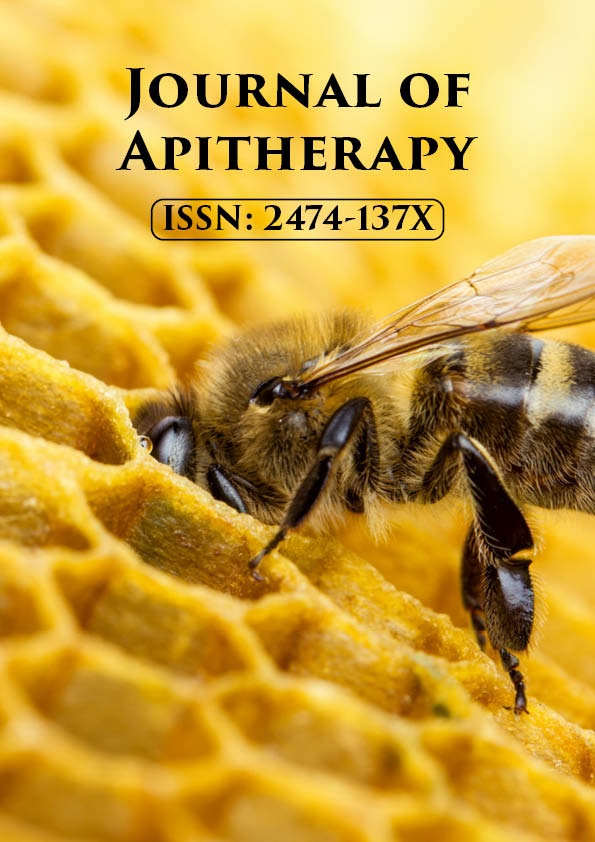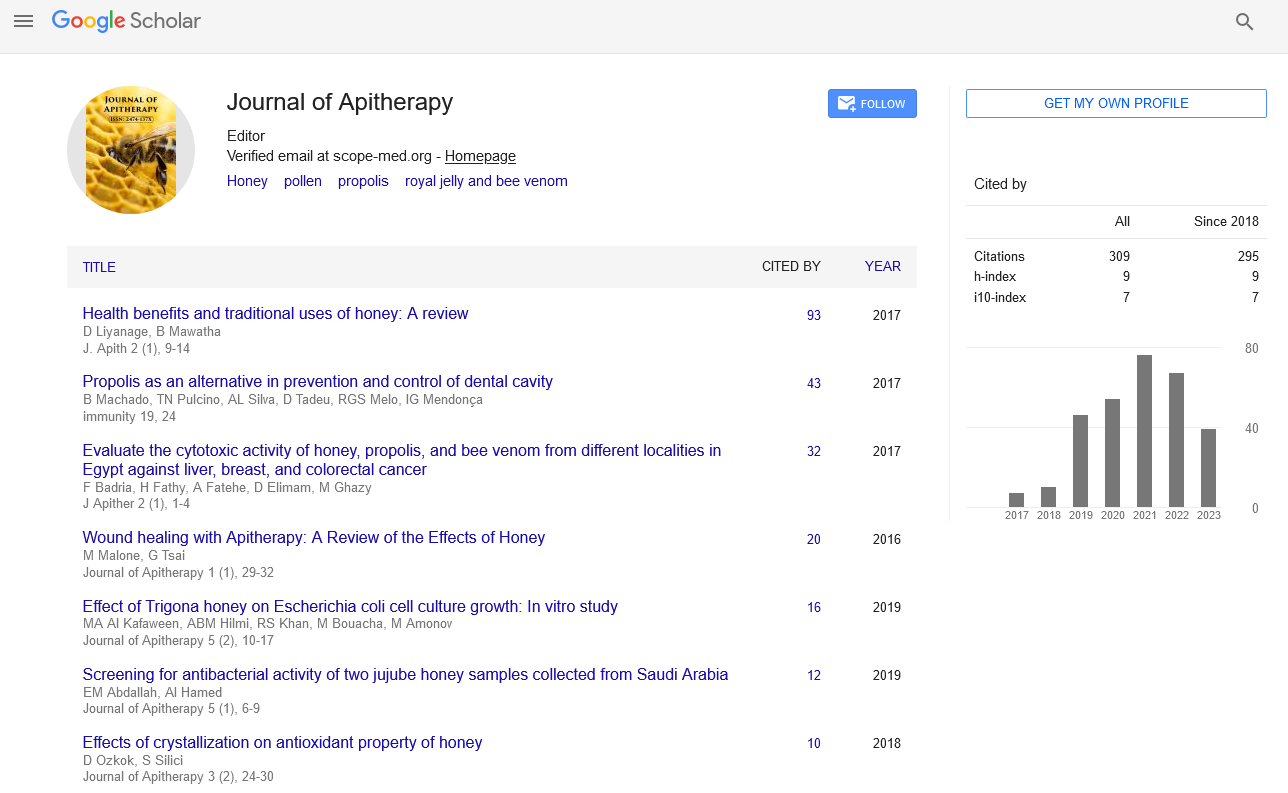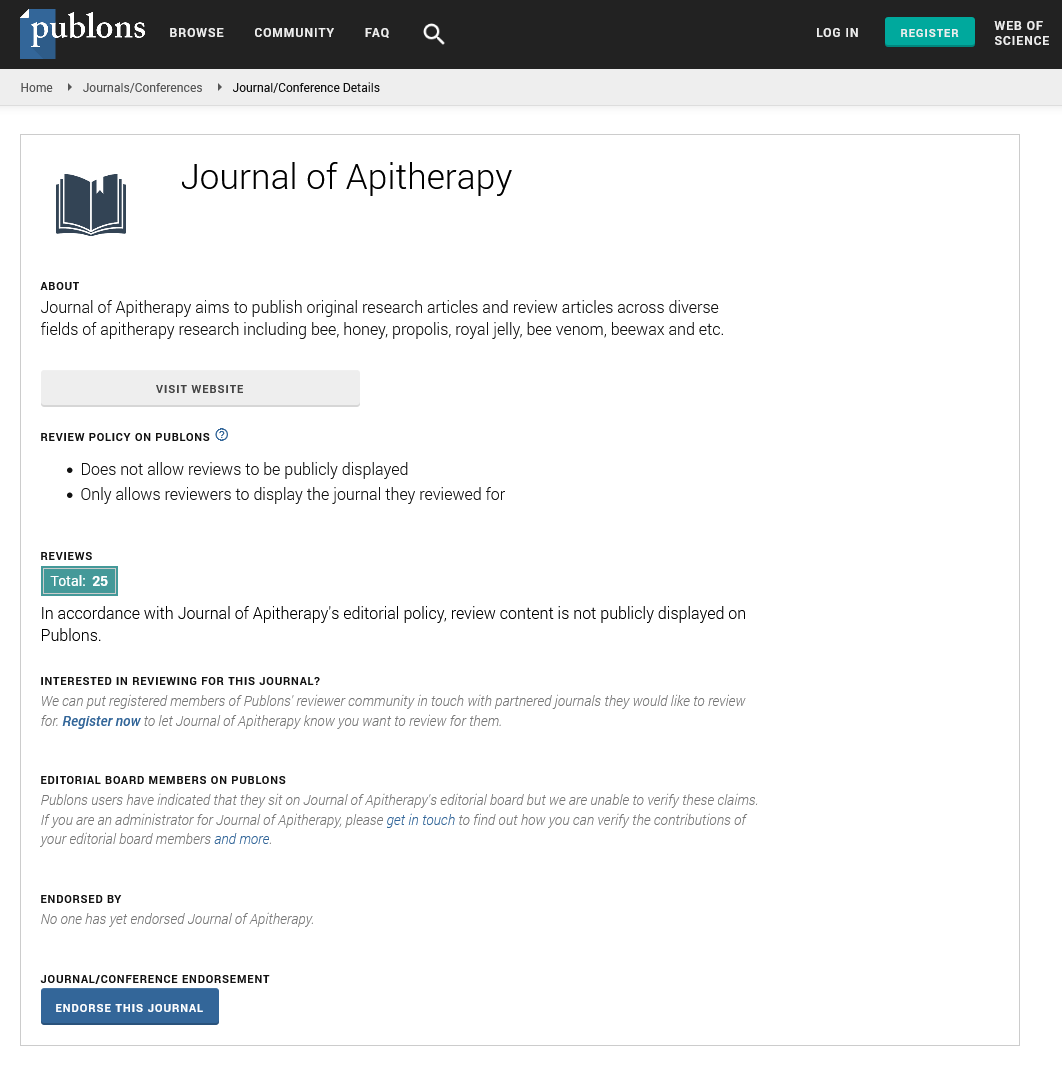Opinion Article - Journal of Apitherapy (2023)
Production and Composition of Royal Jelly
Nancy Mace*Nancy Mace, Department of Horticulture, Fudan University, Shanghai, China, Email: nancymace34@hotmail.com
Received: 05-Jan-2023, Manuscript No. Japitherapy-23-90334; Editor assigned: 09-Jan-2023, Pre QC No. Japitherapy-23-90334(PQ); Reviewed: 23-Jan-2023, QC No. Japitherapy-23-90334; Revised: 30-Jan-2023, Manuscript No. Japitherapy-23-90334(R); Published: 06-Feb-2023
Description
Larvae and adult queens are fed with royal jelly, a fluid produced by honey bees. It is produced by glands in the nurse bees’ hypopharynx and is given to all larvae in the colony, regardless of sex or caste. Royal jelly falls within the topic of apitherapy and is occasionally used in alternative medicine. Although royal jelly is frequently marketed as a dietary supplement for people, the European Food Safety Authority has determined that the evidence at this time does not support this claim. The Food and Drug Administration in the US has filed lawsuits against businesses that promoted royal jelly products with erroneous health claims.
Production
All bee larvae are fed royal jelly, which is produced by glands in the heads of worker bees, whether they are intended to become drones (male bees), workers (sterile females), or queens (fertile females). The drone and worker larvae stop receiving royal jelly after three days, but the queen larvae are given this unique material all the way through their development.
Composition
6.5% fatty acids, 3.5% 10-hydroxy-2-decenoic acid, 12.5% protein, 11% simple sugars (monosaccharide’s), and 67% water make up royal jelly (10-HDA). Apart from the fat-soluble vitamins A, D, E, and K, it also includes trace minerals, antimicrobial and antibiotic compounds, pantothenic acid (vitamin B5), pyridoxine (vitamin B6), and trace levels of vitamin C.
Proteins
A family of proteins known as major royal jelly proteins (MRJPs) is released by honey bees. There are nine proteins in the family, and MRJP1 is one of them (also called royalactin),. The most prevalent and biggest is MRJP1. In royal jelly, the five proteins make up 83–90% of all the proteins. The MRJPs have been identified as the primary therapeutic components of royal jelly, which has been used in traditional medicine since ancient times. They are created by a family of nine genes called the mrjp genes, which are themselves members of the yellow family of genes found in organisms like bacteria and the fruit fly (Drosophila). effects of epigenetics
One of the most prominent examples of phenotypic diversity that is controlled by the environment is found in honey bee queens and workers. Even if two larvae with identical DNA were reared differently, one becoming a worker and the other a queen, the two adults would exhibit significant changes in a variety of traits, such as morphological and physiological variations, longevity, and reproductive ability. Female labourers have only rudimentary, inactive ovaries and are functionally infertile, whereas queens, who make up the female sexual caste, have huge, active ovaries.
Cultivation
By encouraging colonies to produce queen bees using mobile frame hives, royal jelly can be obtained. Each individual queen cell (honeycomb) is harvested for its royal jelly when the queen larvae are around four days old. Large deposits are only generated in these particular cells. This is due to the fact that when worker larvae are given royal jelly, it is fed to them directly and they devour it in its whole. Produced, while the cells of queen larvae are “stocked” with royal jelly much faster than the larvae can consume it. Therefore, only in queen cells is the harvest of royal jelly practical.
Adverse effects
Humans who are allergic to royal jelly may get hives, asthma attacks, or even fatal anaphylaxis. It is unknown how frequently people who ingest royal jelly get allergic adverse effects. Those with other allergies are more likely to develop an allergy to royal jelly.
Copyright: © 2023 The Authors. This is an open access article under the terms of the Creative Commons Attribution NonCommercial ShareAlike 4.0 (https://creativecommons.org/licenses/by-nc-sa/4.0/). This is an open access article distributed under the terms of the Creative Commons Attribution License, which permits unrestricted use, distribution, and reproduction in any medium, provided the original work is properly cited.







